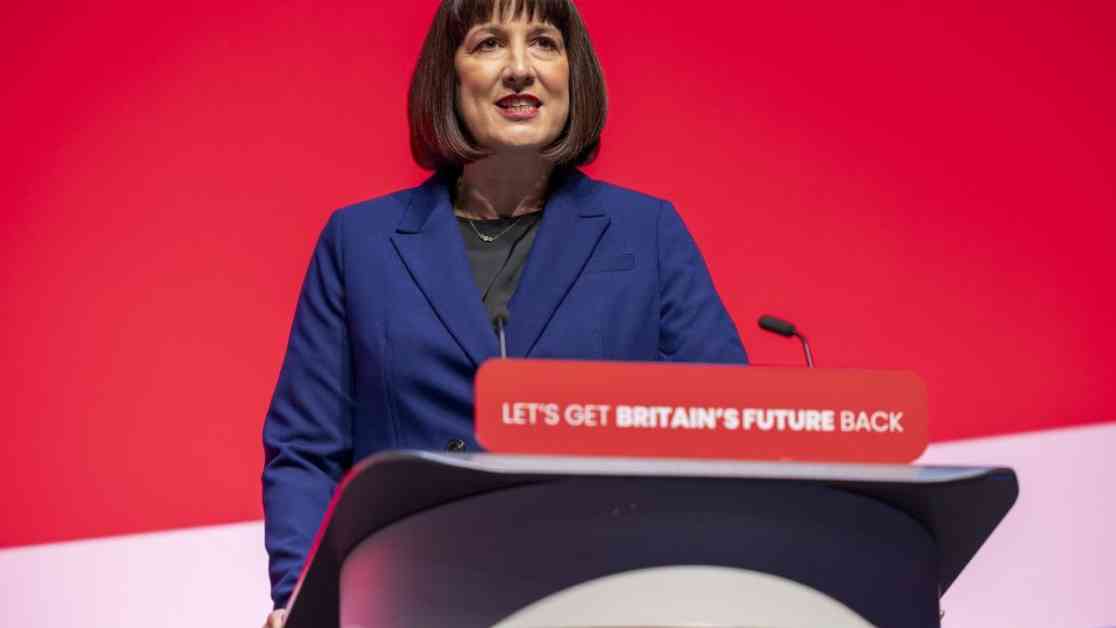The Bank of England’s Decision and its Impact on Reeves’s Budget
A recent decision by the Bank of England could potentially provide Rachel Reeves with an additional £10bn of “headroom” at her upcoming Budget, according to reports. This term refers to the buffer zone that the Government has while still adhering to the Budget rules it sets for itself. Some have suggested that if Reeves does indeed have this extra windfall, she should consider reversing the controversial decision to cut the winter fuel allowance for many pensioners. But how exactly does the Bank’s decision impact Reeves’s budget, and could it be used to limit tax rises or reverse cuts that the Government has already implemented?
Why Some Believe the Bank of England has Increased Reeves’s Headroom
The Bank of England’s decision to maintain interest rates at 5 per cent and provide an update on its quantitative tightening (QT) program has sparked speculation about potential implications for Reeves’s budget. QT involves the selling back of bonds as a reversal of the quantitative easing (QE) program initiated in response to the financial crash in 2009. The Bank’s decision to continue QT at £100bn over the coming year has led to discussions about its impact on the Government’s fiscal rules and public finances.
One of the key fiscal rules is that debt should be decreasing in the fifth year of the forecast period. Currently, any losses incurred by the Bank on QT are reimbursed by the Treasury, adding to the government’s deficit. The Office for Budget Responsibility (OBR) makes forecasts regarding the public finances to hold the Government accountable. The crucial factor determining whether the Government gains more headroom as a result of the Bank’s decision lies in the OBR’s assumptions about future QT levels.
Is a £10bn Headroom Likely?
As of now, the OBR’s assumptions regarding QT levels are unknown, making it challenging to determine whether Reeves will have more or less headroom at the Budget. While some economists believe that a £10bn increase in headroom is unlikely, others suggest that the scenario could vary depending on the assumptions made by the OBR. The pace of active sales by the Bank of England plays a significant role in determining the Government’s fiscal headroom.
Moreover, there is a possibility that the Bank’s QT may not have any impact on Reeves’s headroom if the Government decides to change the definition of debt within its fiscal rules. By excluding the Bank of England’s QT losses from the calculations, Reeves could potentially have even more headroom, providing her with additional flexibility in budgetary decisions.
Potential Reversal of Winter Fuel Allowance Cut and Other Budgetary Considerations
If Reeves were to have more headroom at the Budget, some economists suggest that she could utilize this additional space for increased spending or to reduce the magnitude of anticipated tax rises. However, the likelihood of Reeves reversing the cuts to the winter fuel allowance remains uncertain. The winter fuel allowance, designed to assist pensioners with heating bills, was recently scrapped for many pensioners, eliciting mixed reactions from the public and policymakers.
While some argue that Reeves should reconsider cutting winter fuel payments if she has the headroom, others believe that the political capital already invested in this decision may deter any potential reversal. The ongoing discussions about tax rises, public investment, and fiscal rules highlight the complexities surrounding budgetary decisions and their implications for various segments of the population.
In conclusion, the Bank of England’s decision regarding quantitative tightening, the OBR’s assumptions, and potential changes to fiscal rules all play a crucial role in shaping the landscape of Reeves’s upcoming Budget. The interplay between economic factors, political considerations, and public expectations underscores the intricate nature of budgetary planning and decision-making in a dynamic environment. As Reeves navigates these challenges, the ultimate impact on the winter fuel allowance cut and other budgetary measures remains to be seen.













